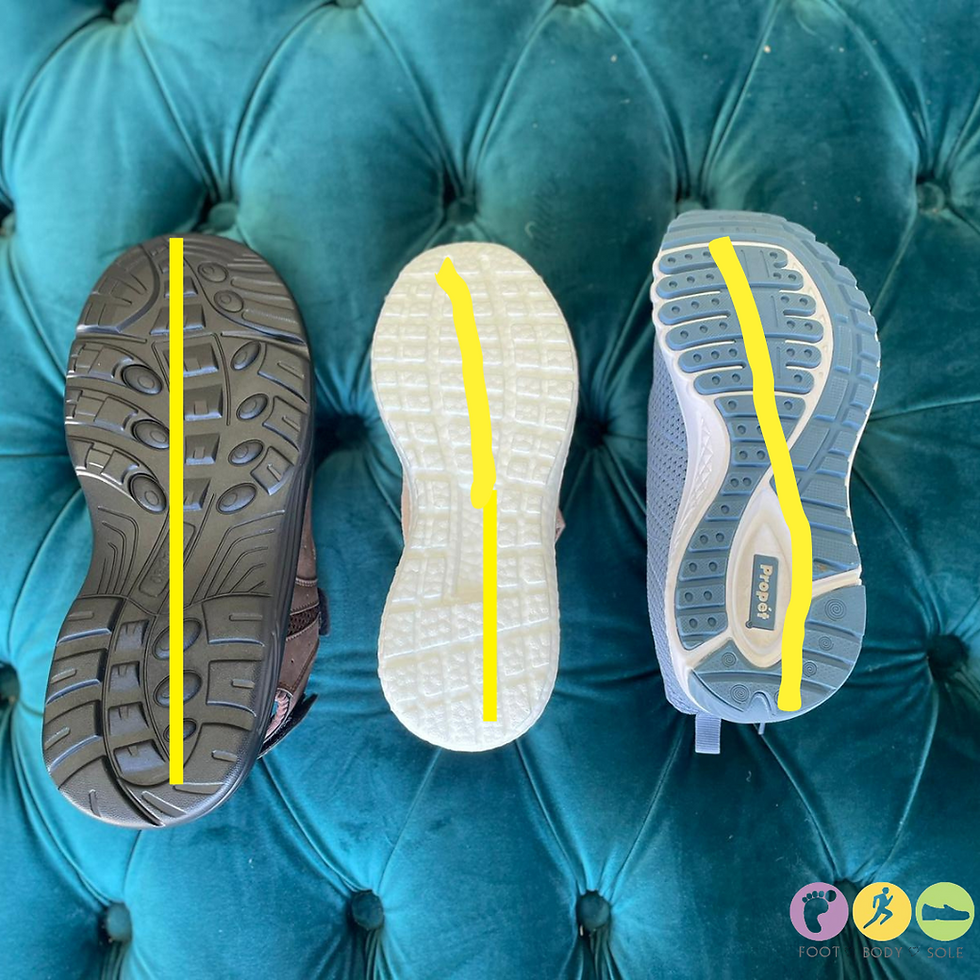Bunion pain, when do we treat, what can a podiatrist recommend and when should you consider surgery?
- Foot Body Sole
- Apr 11, 2023
- 2 min read

As a podiatrist , clinically we see a lot of different complaints from patients in particular, bunion questions and questions related to bunion pain, what can I do about my bunions and when should I consider surgery. So, considering this, I feel it is necessary to discuss these common questions.

What is a bunion?
The correct pathological name given to bunions is hallux abducto valgus (hallux is the term to
describe the big toe), which is an irrevocable foot deformity. However, this doesn't necessarily translate into foot pain. The condition is distinguished by the lateral deviation (abduction-away from the midline of the body) of the hallux with the corresponding medial deviation (adduction-moving towards the midline of the body) of the first metatarsal. "Bunion" is a latin word meaning enlargement, which referring to the swollen appearance of the medial projected eminence that develops as the great toe deviates laterally into the deformity.
How do bunions develop
Bunions form due to a number of reasons.
Tight fitting or high heeled shoes
There are links to family history
A pes planus foot type or flat foot
Weak intrinisc (muscles within the foot) muscles
1st tarsometatarsal joint hypermobility, studies mention likely due to the complications rather than causative
Various clinical soft tissue processes in a continuum in the development of bunions
How can a podiatrist help treat bunions
Footwear assessments and footwear recommendations
Gait analysis - watching how you walk
Refer for x-ray and ultrasound scans to ascertain the extent of damage
Discuss management options - conservative and non conservative
Taping techniques to help support the big toe
Dry needling to reduce pain and loosening up of some of the intrinsic foot muscles
Orthotics to correct any imbalances within the foot
Strengthening/stretching and range of motion exercises to help free up the joint and mitigate deformity worsening
Shockwave therapy to break up any adhesions within the soft tissues, free up the joint space and reduce pain
Laser, ultrasound and interferential therapy to promote healing of the adjacent muscles and tendons in and around the foot and ankle
Foot mobilisations to free up joint space and improve range of motion
Offloading pressure devices to reduce deformity worsening and ease pressure on the bony prominence
Referral to a podiatric surgeon

When do we recommend surgery as a treatment option
If conservative treatment has not resolved the pain, typically, we then refer to a surgeon. The pain associated can be in the big toe joint itself or the adjacent second to joint due the complications from the bunions.
Surgery should always be last resort as clinical research and anecdotal evidence suggests that patient expectations should be managed, as often post bunion surgery, further complications can arise.
As you can see there are many options available for some experiencing pain from their bunions or have asymptomatic bunions and would like to know how reduce their deformity worsening and becoming painful and prevent heading towards surgery. If you think or know someone who are experiencing bunion pain and may benefit from seeing a podiatrist, please do not hesitate to contact us if you have more questions.
We are located at 108 Bridport St, Albert Park Vic 3206, or you can call us on 03 8648 7678. Alternatively, you can click on the book now button below and it will take you to our online booking page.









Comments